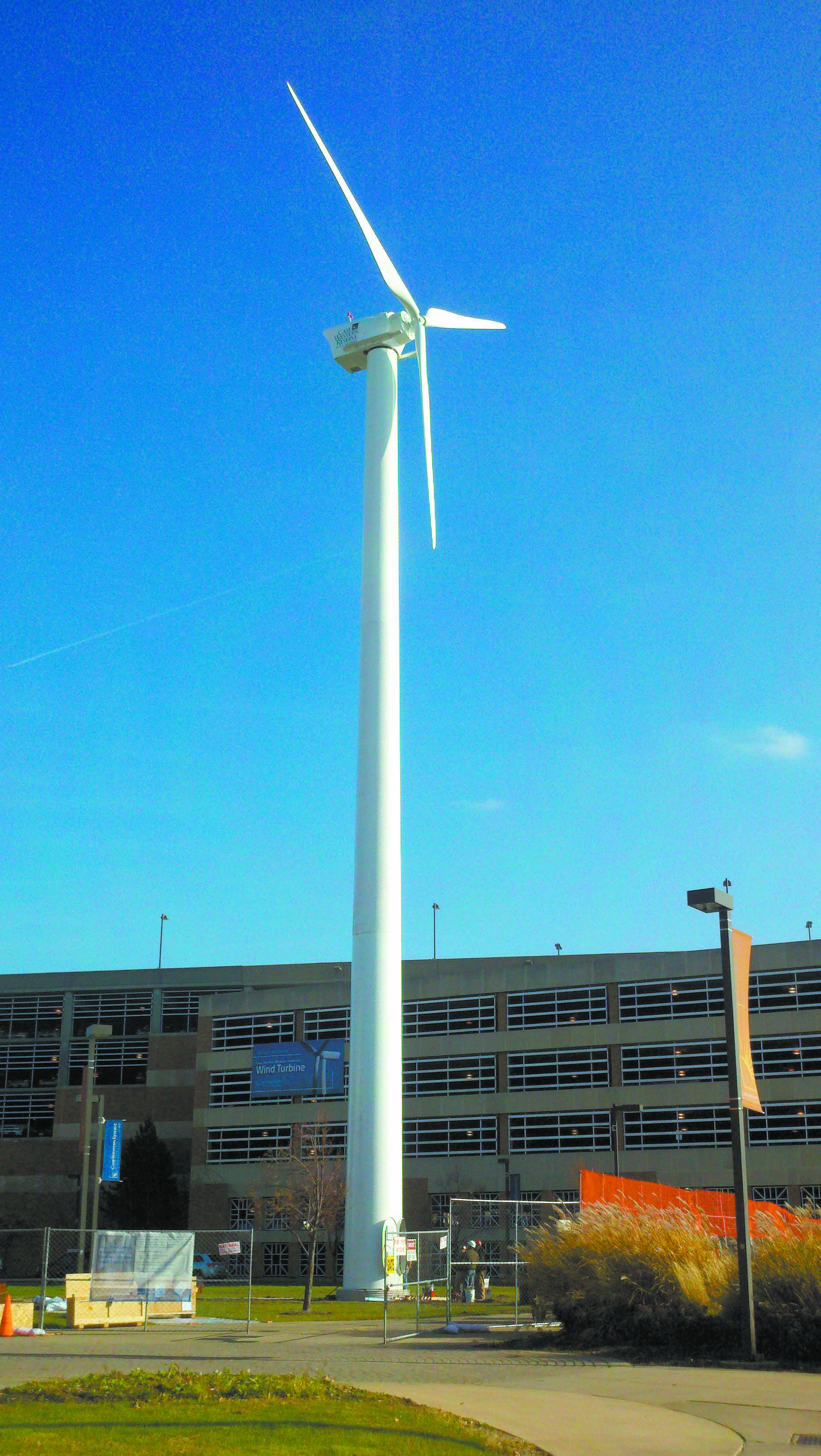A few days prior to Thanksgiving break, many students probably noticed the latest addition to Case Western Reserve University’s quad area: a 156-foot tall wind turbine. The massive white tower arrived Nov. 15, was constructed near Veale Athletic Center throughout the next week, and was fully operational by Nov. 22. While many other college campuses have wind turbines for the purpose of harnessing energy and sustainability efforts, CWRU’s is the first to go beyond that function. Researchers will use the turbine to collect data for use within the university as well as to help various Ohio companies develop new technology.
The School of Engineering obtained funding from both the Ohio government and manufacturers around the state. The Ohio Frontier Commission Wright Project awarded $3 million, while at least seven companies have combined to match that amount. CWRU is looking to get more companies who can benefit from wind energy research on board. Azure Energy was the general contractor for the project, but Norris Brothers, a local company, was responsible for building the foundation, erecting the tower, and attaching the blade. Northern Power Systems, based in Vermont, built the turbine at their headquarters and also had a representative present during the week of construction. The Case Daily from Dec. 1 contains a link to a short YouTube video depicting the attachment of the blade to the tower.
Engineering professor David Matthiesen was the original driving force behind building a wind turbine on campus. “A few years ago, I came up with the idea of using a wind turbine as a research instrument to allow companies to demonstrate their products,” he said. This approach gives the turbine multiple purposes.
The companies that helped fund the construction of the turbine will be able to do research on their own products in order to advance technology in their fields. For example, Matthiesen explained that Cleveland Electric Labs (CEL) will utilize CWRU’s tower to test the effectiveness of fiber optic strain sensors. CEL is a company that manufactures platinum thermocouples, which are temperature sensors often used on large structures such as bridges. They can also be used to convert heat into electric power, which is how they will be tested here.
CEL will install both the old and the new types of sensors to gauge the efficiency of its new technology. Collecting data on both sensors will enable them to determine whether any changes need to be made to their products before releasing them. This innovative research method allows CWRU to forge strong bonds with local companies and pave the way for market research, since it will be the first entity to gather results on various technology developments.
Faculty members here will also perform their own research, experimenting with effects like vibrations in the foundation of the tower, materials and ice interactions, and how to incorporate electronics with energy storage. Veale will now be partially powered by the turbine. The school will monitor how much of Veale’s energy load is being generated by the turbine and explore related sustainability options.
While the wind turbine is certainly a victory with regards to the Climate Action Plan and groups like the Student Sustainability Council, engineering students want to make sure it produces tangible results. “From what I’ve heard the turbine generator is rated at a very low horsepower. If we’re going to spend money on something, I’d much rather see it be very functional than just marginally functional,” said senior aerospace and mechanical engineering major Aaron Gordner. Stephen Hern, a sophomore biomedical engineering major, offered a similar reaction. “I think that the windmill represents an interesting early step into our school’s actions taken towards sustainability, but until we follow through with substance, it amounts to little more than a PR stunt,” he said.


